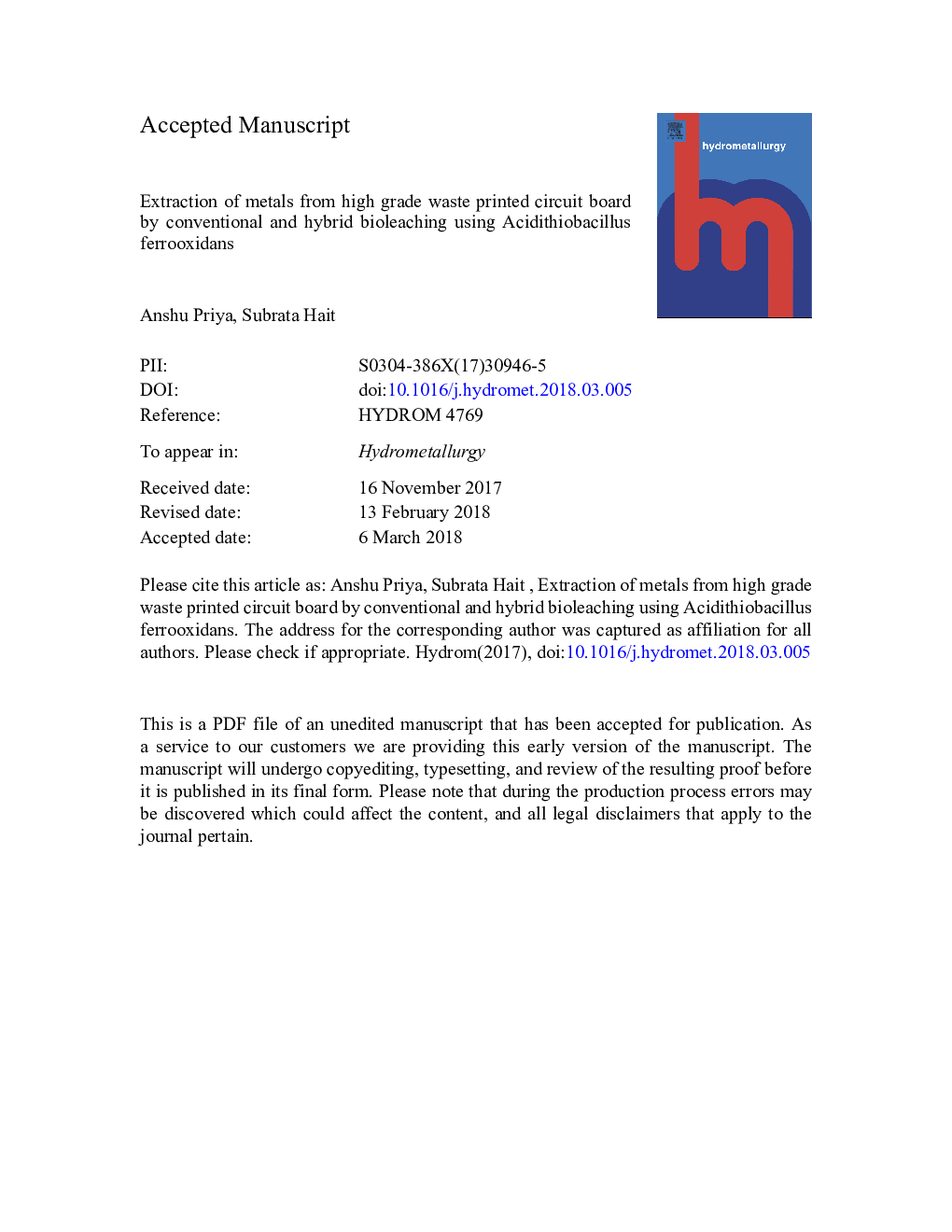| Article ID | Journal | Published Year | Pages | File Type |
|---|---|---|---|---|
| 6658966 | Hydrometallurgy | 2018 | 35 Pages |
Abstract
Bioleaching of selected metals, viz. Cu, Zn, Pb, Ni from e-waste in the form of high grade waste printed circuit board (PCB) of computer is comparatively assessed using pure culture of Acidithiobacillus ferrooxidans with and without the supplementation of lemon juice containing 0.2â¯M citric acid as active constituent and natural tetradentate chelating agent to simulate hybrid and conventional conditions, respectively. Metal leaching from the comminuted PCB is observed to vary greatly under the conventional and hybrid bioleaching conditions showing better solubilization in the hybrid approach due to the chelating effect of citric acid. At a pulp density of 7.5â¯g/L and the comminution fines in the size range of 0.075-1â¯mm, the maximum leaching of 94% Cu, 92% Zn, 64% Pb and 81% Ni are observed at 18â¯days of hybrid bioleaching with an asymptotic trend from 12â¯days onward. Measurement of the exopolymeric substances (EPS) production during bioleaching indicates a profound role in the leaching of metals. Extraction through chemical precipitation yields more than 99% of the selected metals from bioleached liquor. Hybrid bioleaching technique followed by chemical precipitation can be deliberated as a complete solution for metal recycling for resource recovery from e-waste.
Keywords
Related Topics
Physical Sciences and Engineering
Chemical Engineering
Chemical Engineering (General)
Authors
Anshu Priya, Subrata Hait,
